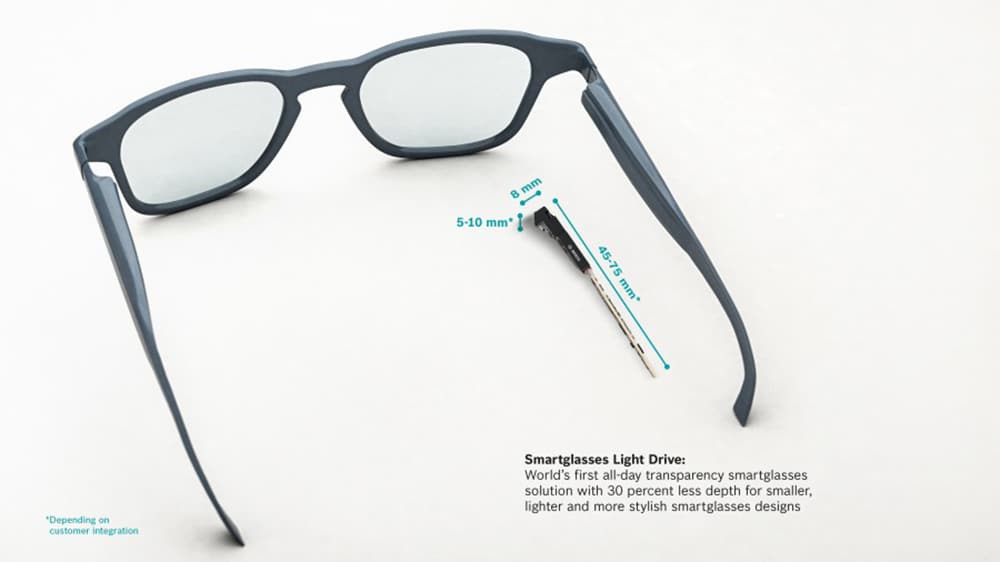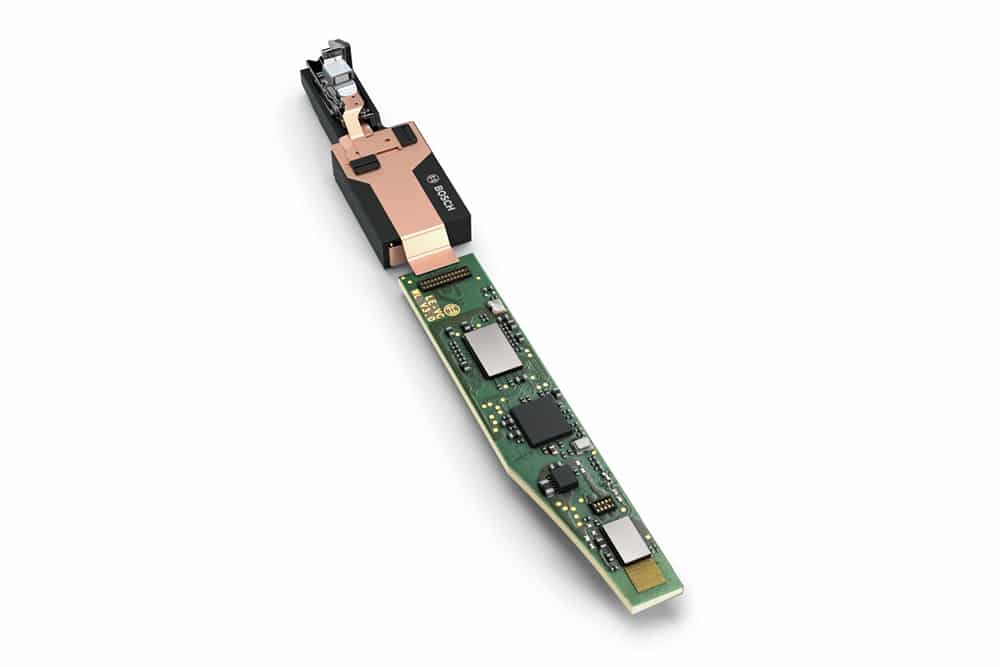The smart glasses currently on the market have several problems. They look like people don’t want to wear them on the street under normal conditions. Another problem is related to power – the battery is barely enough for several hours of operation.
Bosch wants to solve these problems and offer smart glasses for a wide range of users. It has developed a new approach to the production of augmented reality displays. The technology, called Light Drive, will turn any glasses into “smart” ones, practically without burdening them. The system will also work with glasses to correct users’ vision.

The system is 30% flatter than existing solutions and the smallest system of its kind on the market. It weighs less than 10 grams. A MEMS-based bundled light scanner inside the Light Drive System scans a holographic element (HOE) that is integrated into the lens of the smart glasses.
The technology enables the user a hands-free, secure viewing of virtually all information from a connected mobile device. It reflects light from a holographic element directly into the retina, projecting alerts, calls, wake-up calls, appointment reminders and short message services or navigation information. Besides, the technology will be ideal for notes-based information such as task lists, shopping lists, recipes or assembly instructions that are particularly practical, where it is important to keep your hands free.

They will always be clear and bright enough to see them in daylight. When turned off, the glasses will be completely transparent, so that the system can be combined with glasses.
Glasses with Light Drive could be a more convenient alternative to smartwatches because to use them you don’t even have to look at your wrist. This will make them the perfect accessory for drivers, motorcyclists, and cyclists.

Most likely, Bosch will not independently produce wearable gadgets but will begin to supply Light Drive to traditional eyewear manufacturers. Those will be able to independently develop interfaces and select system settings.
Bosch plans to introduce the technology at CES 2020 in Las Vegas next week. And the first devices based on it will be available in 2021 under the product name BML500P for manufacturers of large series.
